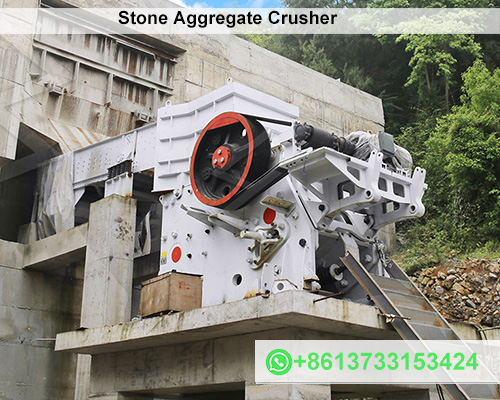A Typical Stone Aggregate Crusher Overview and Operation
Introduction
Stone aggregate crusher play a pivotal role in the construction and mining industries. They are essential for producing crushed stone, which is used in various applications such as road construction, concrete production, and landscaping. This article provides an overview of a typical stone aggregate crusher, its components, and its operational processes.

Types of Stone Aggregate Crusher
There are several types of crusher commonly used in the production of stone aggregates:
- Jaw Crusher: These are primary crusher that use a compressive force to break down large rocks into smaller pieces. They are known for their ability to handle hard and abrasive materials.
- Cone Crusher: These are secondary crusher that further reduce the size of the material after it has been processed by a jaw crusher. Cone crusher use a rotating mantle and a stationary bowl to crush the stone.
- Impact Crusher: These crusher utilize impact forces to break down materials. They are ideal for softer materials and produce a more uniform product compared to jaw and cone crusher.
- Vertical Shaft Impact (VSI) Crusher: These are specialized impact crusher that are particularly effective for producing high-quality aggregates with a consistent shape.
Key Components of a Stone Aggregate Crusher
A typical stone aggregate crusher consists of several key components:
- Feeding System: This includes hoppers and feeders that control the flow of raw material into the crusher. Proper feeding ensures efficient operation and reduces wear on the crusher.
- Crushing Chamber: The core of the crusher where the actual crushing occurs. The design of the crushing chamber varies depending on the type of crusher.
- Drive Mechanism: This includes electric motors, belts, and pulleys that provide the power necessary to operate the crusher.
- Screening Equipment: After crushing, the material often needs to be screened to separate the desired aggregate sizes from the fines and larger pieces. This can include vibrating screens and classifiers.
- Conveyor Systems: These are used to transport crushed material from the crusher to storage or further processing. They can be horizontal, inclined, or even in the form of transfer chutes.
- Dust Control Systems: To minimize airborne dust generated during crushing, many setups include dust suppression systems that use water sprays or dust collectors.
The Crushing Process
The stone aggregate crushing process typically involves the following steps:
- Material Extraction: Raw materials, such as granite, limestone, or basalt, are extracted from quarries or pits.
- Feeding: The extracted material is fed into the crusher using a loader or conveyor. The feeder regulates the flow of material to ensure the crusher operates efficiently.
- Crushing: The material enters the crushing chamber, where it is subjected to mechanical forces. Depending on the type of crusher, materials are crushed through compression (jaw and cone crusher) or impact (impact and VSI crusher).
- Screening: Once the material has been crushed, it is passed through screens to segregate the desired aggregate sizes. Oversized materials can be recirculated back into the crusher for further reduction.
- Stockpiling: The final products are then transported via conveyors to stockpiles, where they can be stored for future use or shipped directly to customers.
Applications of Crushed Stone Aggregates
Crushed stone aggregates are used in a variety of construction applications, including:
- Concrete Production: Aggregate is a key ingredient in concrete, providing strength and stability.
- Road Construction: Crushed stone is used for base layers, subbase layers, and as surface materials in road construction.
- Landscaping: Decorative aggregates are used in gardens, pathways, and retaining walls.
- Railroad Ballast: Crushed stone is used to support railway ties and facilitate drainage.
Conclusion
A typical stone aggregate crusher is a complex machine designed to convert large rocks into smaller, usable materials for various construction applications. Understanding the types of crusher, their components, and the overall crushing process is essential for optimizing production efficiency and achieving high-quality aggregates. As the demand for construction materials continues to grow, the importance of effective stone aggregate crusher remains paramount in the industry.









